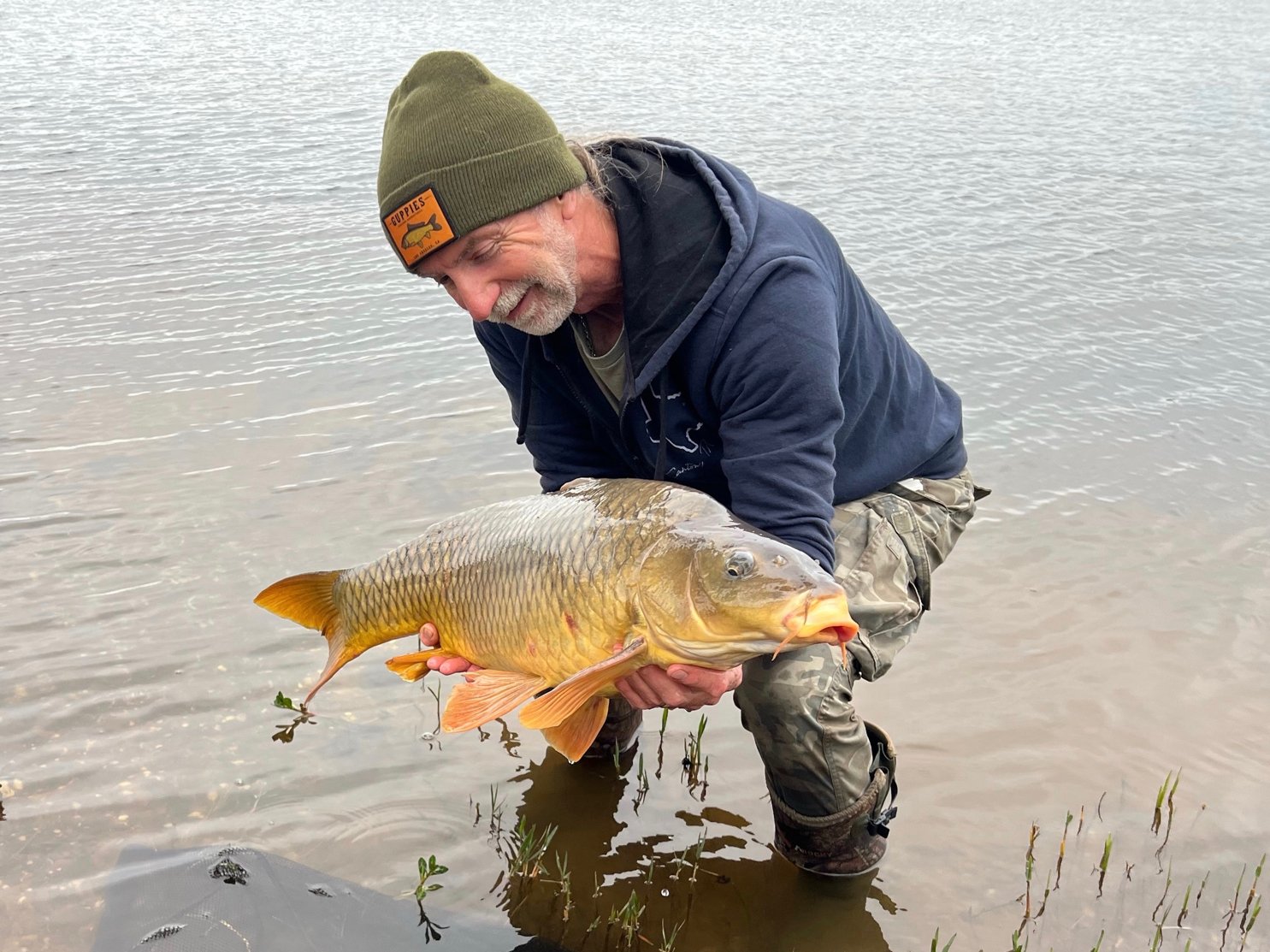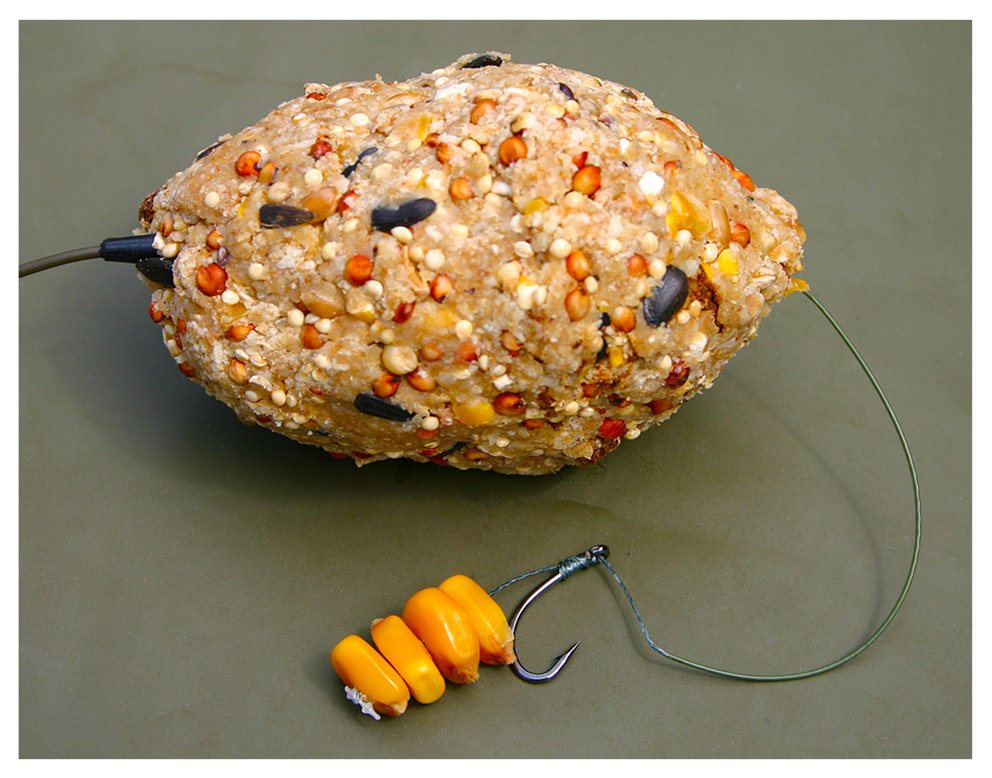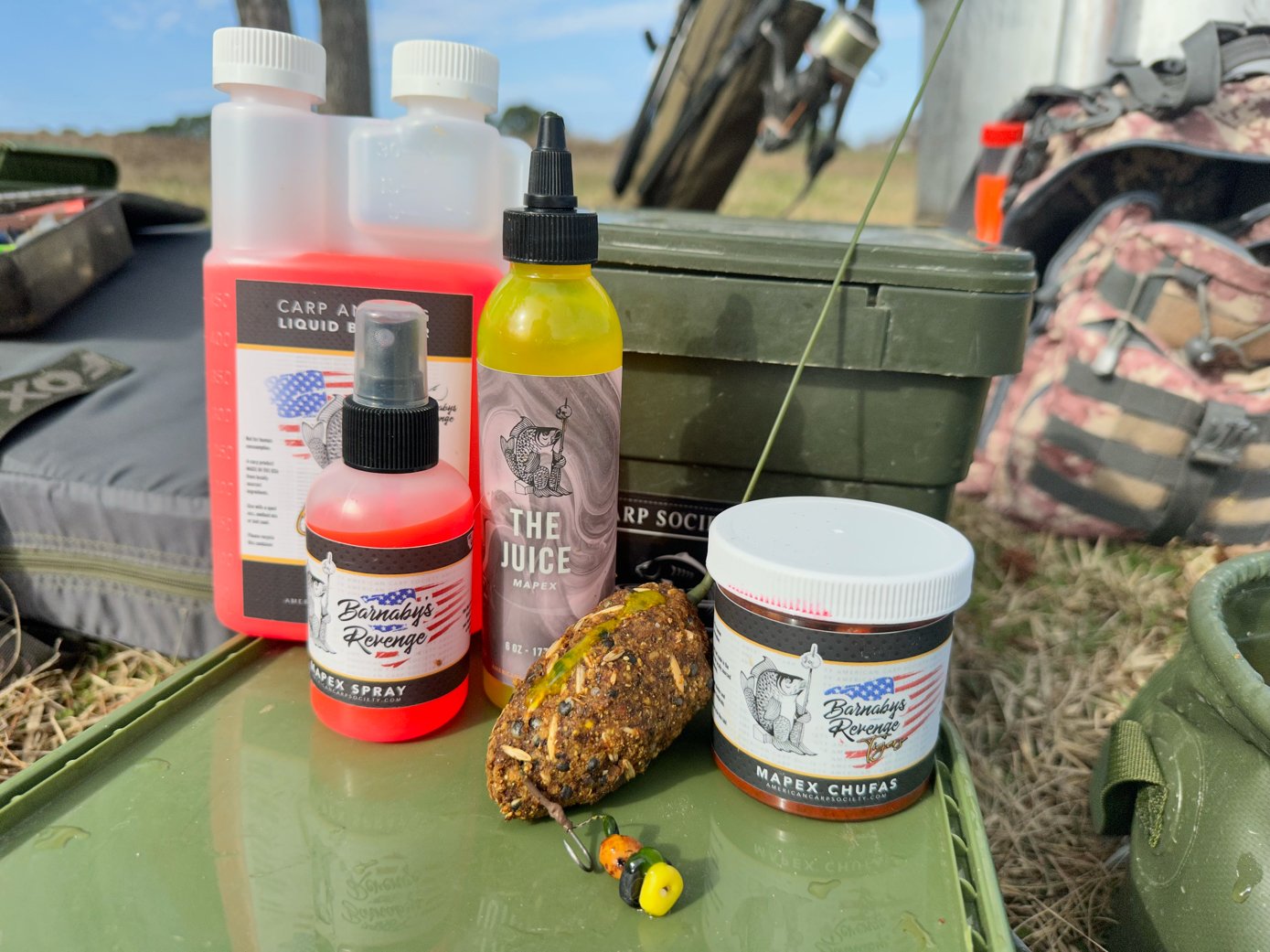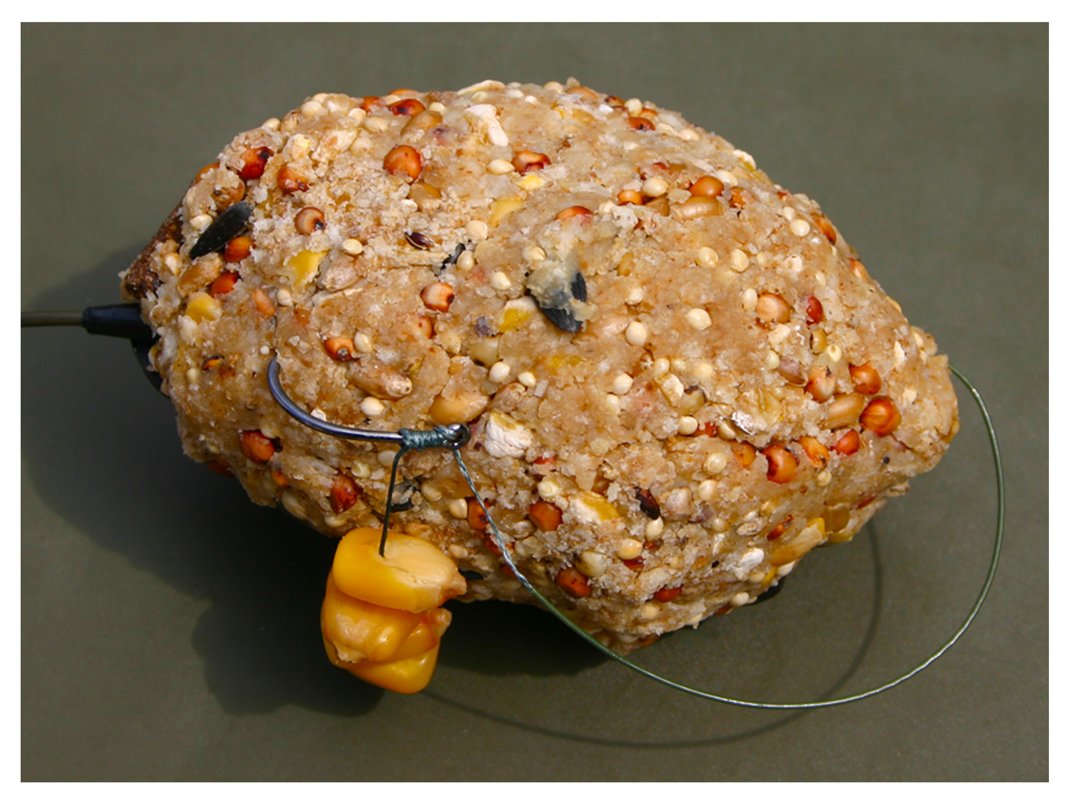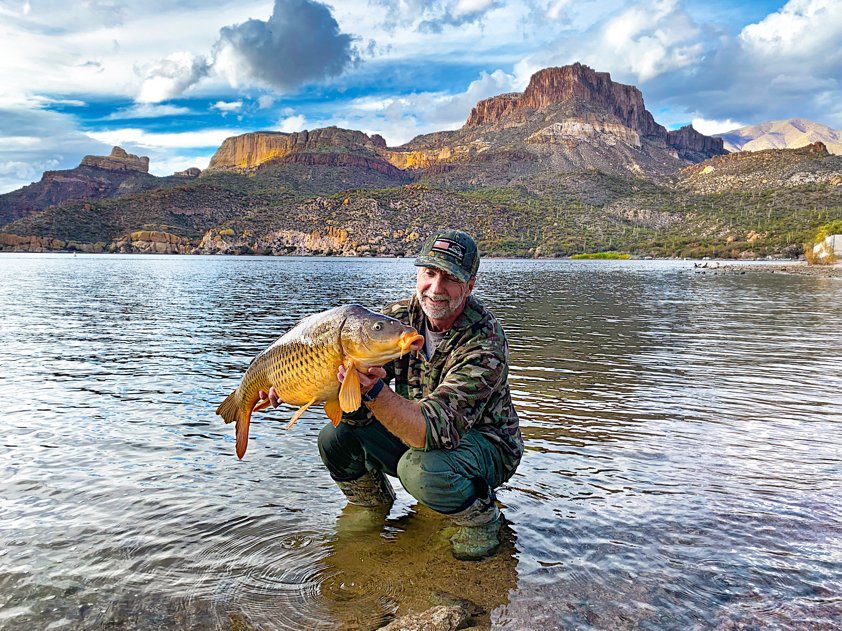USA Carp Angling Intro - Part 6
by
Wayne Boon
Hello again, I hope your Summer Carp fishing is going well and that the fish have been cooperating for you! If like me here in East Texas, it’s been a bit too toasty to fish more than an early morning or late evening in your neck of the woods, Fall and the cooler temps are fast approaching… Lets get organized, get out there and do it!! ;)
This will be the 6th blog designed to introduce and instruct anglers on the new age of Carp Angling…
Having covered the virtues of PVA or Poly Vinyl Alcohol a couple of months back, this month I thought we’d take a good look at another very commonly used baiting technique called “The Method.” It’s similar in concept to both the PVA approach and the Oats & Creamed Corn or and Grits pack baits some of you maybe already familiar with using…
If you didn’t catch the PVA blog (see blog #4 a few months back) which is predominately a dry bait carrying product that totally dissolves when it comes into contact with water leaving no traces and is totally environmentally friendly, please do check it out. I promise, like this blog, it’ll be well worth your time to read… and, it’s applicable to fishing many other species too ;)
Ok, lets look into exactly what ‘the method’ is and how to use it to catch more Carp (cyprinus carpio).
How To Fish The Method
Basically, what we’re trying to do when “fishing the Method” is to create a very competitive feeding situation for the Carp in the area we’re fishing. You’ll often hear the term “pre-occupation,” this is just one in the same thing really. The Carp are so busy competing with each other for the morsels of food you’re presenting that they tend to make mistakes and get themselves hooked…
Note: Please check with your local Fisheries Department to make sure pre-baiting or chumming is legal in your area before employing this tactic.
So, that begs the question, how do we get them into this frenzied state and force them to make an error?
Well firstly, we must be fishing in a swim/peg that is likely to contain underwater features that Carp favor frequenting and feeding on. There is no use in fishing even the best techniques in an area where the Carp don’t feed.
How we find where the Carp like to feed is a whole other 'complex issue' that I briefly touched upon a few months back but will discuss in much detail in another, future “Water Craft” blog.
Next, we need a food item that will keep them busy for a while but not fill them up, this is where the method mix comes in… “The Method” involves molding a paste or pack bait around a purpose-built cage on your hook length. You could alternatively just mold the mix around your sinker/lead weight before casting.
Then you cast the molded Method mix along with your baited hook into the area you’re fishing. Once the mix hits the bottom of the lake, it starts to break down into a nice pile of attractive food items for the carp all around your hook bait. More hand made balls of ‘method’ mix are then slowly but consistently thrown in around where you’re fishing to ‘build’ the area into a very attractive place to hangout for the hungry carp.
Note: A sturdy rod is needed to cast a fully loaded Method mix out, it could weigh around 7 or 8oz in total. A 2.75lb test curve rod is recommended as a minimum.
Let’s talk about a couple of Method/Groundbait mixes that have worked extremely well for me and all the American Carp Society team over the years:
Firstly, here is one where we have done all the work for you, it’s absolutely stuffed with carpy goodness and very versatile, all you need to do is to just add lake water to the mix - easy… ;)
Check out the quick vid below:
The next mix involves a little more work but is also devastatingly effective! The angler that prefers to “roll his/her own.” might prefer this one. You know who you are… ;)
To start with, soak a wild birdseed food in Salty water for at least 24 hours, 36 hours is preferred so plan ahead. You can find the birdseed in most large grocery stores in the pet-food section.
Wild Birdseed
Use two or three tablespoons of salt (non-Iodine salt). Don’t use regular table salt because it contains Iodine which is a carp repellent. Human food grade sea salt, pink Himalayan or rock salt is good at 2 or 3 tablespoons per 5 gallon bucket of water. Some folks use even more but we encourage you to experiment yourself to find a level you’re comfortable with.
Note: Try not to use water from your Kitchen faucet, as it’s more than likely going to be chlorinated and/or have fluoride in it. Use rain or lake water. Try taking a few buckets of lake water home to use if you know another session is on the cards soon. Or, if you do have to use Tap water, let it sit outside in a bucket under the full sun for a few days to remove the Chlorine.
If you want to also add hemp or any of the larger particles to your wild bird seed mix such as Maize, Garbanzo or any other kind of Beans, please make sure they have also been boiled at a vigorous boil for at least 30 minutes in addition to their 24-36-hour soak.
Note: This boiling process has the added benefit of releasing all the natural sugars and amino acids that are present in the seed, which is great news because they are the major attractors/feeding triggers for the Carp.
Birdseed after a 36 Hour Soak
If in any doubt do both the soak and boil to make sure of the fish’s safety!
Note: Please don’t skimp on the time here because you need the seed to be thoroughly soaked and expanded before presenting it to the fish, otherwise you are feeding the fish with seeds that may seriously harm them!!! When dry seeds of any kind are soaked (re-hydrated) they expand in size by somewhere around 20+ % of their original dry size.
You don’t want any fish with a gut full of semi soaked seeds for obvious reasons.
Some typical, off the shelf flavors
Here are some examples of flavor and attractants that are typically present in many Carp angler's bait fridge over the last 10-15 years. There are quite a few excellent US based bait companies these days that sell awesome flavors and products.
It's a great idea to add flavor to the water that you soak the seeds in, three of our "off the store shelf" favorites are liquid Molasses, Vanilla extract and Superior's Vanilla & Butter Nut flavor but use whatever you’re already comfortable with including our very own flavors (Asterbury Creme, Mandala Gold, Desert Fruit and Mapex etc. that are available in various forms on the American Carp Society web store…
Bread Crumbs are often used to bind the mix and hold it onto the cage, this ingredient is again obtainable from the grocery store or you can make your own by drying out sliced bread in the sun or in the oven on a low heat and then crunching into crumbs.
Other binders commonly used in place of or in combination with Bread Crumbs are Layers Chicken Mash, Soy Meal, and Panko among many others. Just remember that the mix needs to break down within a few minutes of landing on the lake/river bed to be most effective.
Place the amount of soaked seed you need into a bowl with a little of the water they were soaking in and then slowly add the bread crumb and mix thoroughly…
At this stage, you can add any other ingredients you want to try such as sweetcorn, fishmeal, CSL/pakka/hemp pellets, betaine, cold pressed hemp oil etc. and it’s a big “etc.” But I advise to keep it simple at first.
Keep adding the bread crumb slowly while you’re mixing, if you need more water add very carefully, a few drops at a time while mixing.
You want to end up with a consistency that will mold well around the cage and stay together during your cast but not take any more than about 5 to 10 minutes to totally breakdown and fall off your cage or lead weight assembly once its hit the bottom of the lake
Method Mix ready for Balling
You can test the time it takes your mix to break down by just balling a little of it up and throwing it in front of your rods to see how long it takes to completely break down.
Note: Keep some of the soaked seed back for use later in the session…
Now we’ve got the mix together let’s look at the business end of the rig and how to present your hook bait. The section below shows the typical component parts of the Method rig.
METHOD RIG COMPONENTS
Method cages come in various designs and sizes from 1oz up to 3oz in weight are common, the one shown above is typical in design. I like the heaviest version available (2 to 3 oz.) so that the feeder cage acts as a bolt rig. This is where the weight and bulk of the feeder cage sets the hook as the Carp “bolts off” after picking up the bait, feeling the point of the hook and panicking.
There are also specially made inline and swiveled weights that work really well in place of the cage for this tactic. I tend to use a regular swiveled flat sided pear weight on a safety clip as shown in the video above these days. Try all three (cage, inline method lead and regular, flat sided Pear weight and you decide which suits you better.
Choose your hook (size 6’s & 4’s work well) and tie the hook length material you’ve chosen using the knotless knot with a hair. Alternatively, if you’re not a “hair fan,” no problem, just tie the hook with your usual knot and side hook the bait making sure the point of the hook is showing.
Tie the other end of the hook length to a size 8 swivel.
The hook length
As shown below, thread an 18 to 24” length of Rig Tubing (discussed in an earlier blog) onto the end of your mainline to stop the line getting behind the Carp’s scales and pulling them off during the fight. This also gives the line a lot of added abrasion resistance when fishing rocky or snaggy areas.
Next, take the method cage and thread it onto your mainline as shown pushing the rig tubing into the rubber tail at the top of the Method cage, dab with a spot of super glue at the joint where the rig tubing pushes into the tail rubber at the top of the method cage to secure and then tie the mainline to your hook length via the swivel.
Threading the Rig Tubing and Method Cage onto the Mainline
Tie the Mainline onto the swivel at the end of the Hook length
Push the Swivel up into the Method Cage
Now gently push the swivel home into the soft rubber grommet at the base of the cage. Almost all method cages have the soft rubber grommets in their base for this purpose. Same thing for the newer method weights that have been on the market over the last decade or so.
Note: Regardless of how you rig up the method cage make sure that it is semi-fixed to your mainline.
That is: If you break off after hooking-up and the fish is swimming around, hook in its mouth with the method cage trailing behind it, make sure that the method cage is rigged as above so it can easily pull free of the broken line when it gets caught up or snagged on under water structure.
This will ensure that the fish doesn’t get tethered to the snag and die a slow, hungry death.
Next, as the following 3 photos show, pack the mix quite tightly around your Method cage and bait the hair with the bait of your choice and cast out to your chosen feature.
Partially Loaded Method Cage
Baited and Ready to Go #1
Baited and Ready to Go #2
Load the method mix heavier on one side of the cage than the other and pin the hook in the mix on the lighter side.
This ensures two things: Firstly, that your hook length doesn’t tangle during the cast and secondly, that the hook bait always ends up on top of the cage facing the surface of the water and the fish when it lands on the bottom of the lake. i.e. the heavier side of the cage will always land on the lake bed with the lighter side with the hookbait pinned to it facing up.
Note: It's also a great idea to attach a PVA nugget onto the baited hook as I detailed in “Part 4, the PVA blog” a couple of months back, leave the hook point free to nick into the method ball and then cast out to your chosen spot. After a couple of minutes, the PVA nugget will melt off the hookbait and rise to the surface to give you the exact location of your bait.
When this happens, if it's legal in your state to chum, be ready to catapult or spoon up to 10 balls of the method mix out to the spot where the PVA nugget hit the surface to get things started.
Then recast your hook bait with a reloaded method cage to the same spot every 10 to 20 minutes for the first hour or until you have the fish in front of you feeding.
Mix Balls & Catapult
After you start getting bites with a few fish in the net already and feel the Carp are feeding while “elbowing” each other out of the way to get at your bait, reduce the method mix going in and occasionally spod/spoon/catapult some of the soaked birdseed you kept back earlier out into the swim to keep the Carp busy routing around in your swim for the small particles and seed.
The trick at this stage is to just put enough food in to keep them competitively looking for food and in front of you but not to fill them up.
Until you get used to fishing this way I suggest literally sitting on your hands while waiting for a “screaming run” because you tend to get a lot of knocks, nudges and beeps on the alarms when the fish are bumping the method mix off the cage to eat it.
Wait for the one tone scream of the alarm denoting a "full-on" run pulling yards of line from your reel before you are tempted to lift your rod in to the fish, although technically, the weight of the method cage or lead weight acts as a bolt rig and hooks the fish for you as the fish “bolts” in a panic when it feels the hook point prick it’s bottom lip.
Hope you have a lot of fun with it… Wishing you much luck out there this Fall and beyond!
All the best and many tight lines…
Wayne
About Our Organization:
The American Carp Society was formed in 2002, with the goal of promoting and educating the public on the sport of specimen Carp Fishing in the USA.
The Common Carp (cyprinus carpio) is one of the hardest fighting freshwater fish in the world and is now being pursued by anglers of all persuasions, from fly fisherman to dedicated Specialist Carp anglers as a sport fish. The American Carp Society is a membership based organization and is responsible for promoting the sport and ensuring careful stewardship of both the specimen fish and its environment for the future generation of American Carp Anglers.
Website: www.americancarpsociety.com
Email: info@americancarpsociety.com
Instagram: www.instagram.com/american_carp_society


